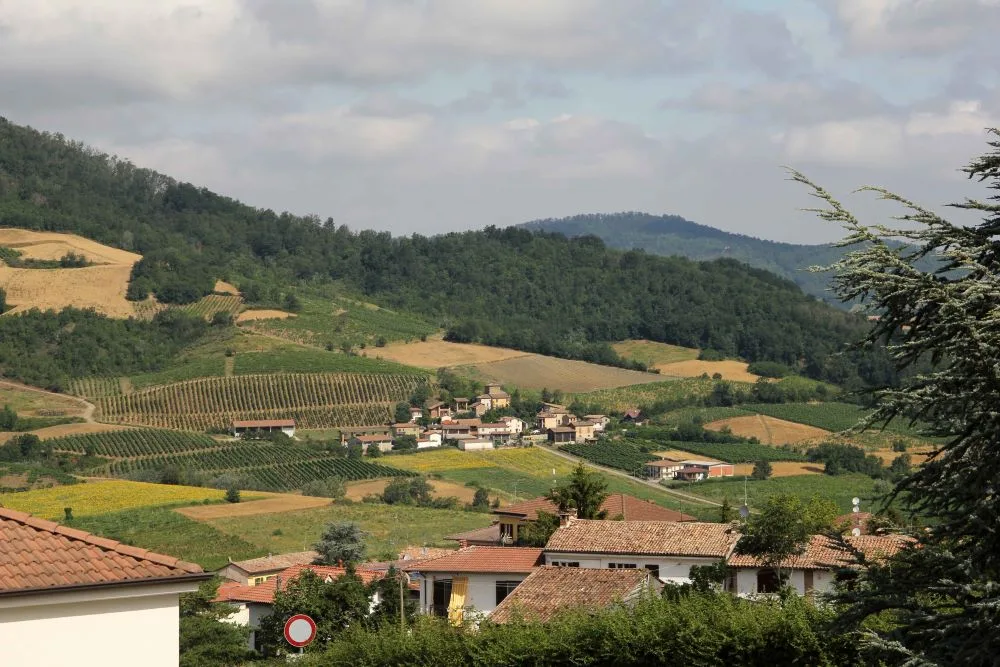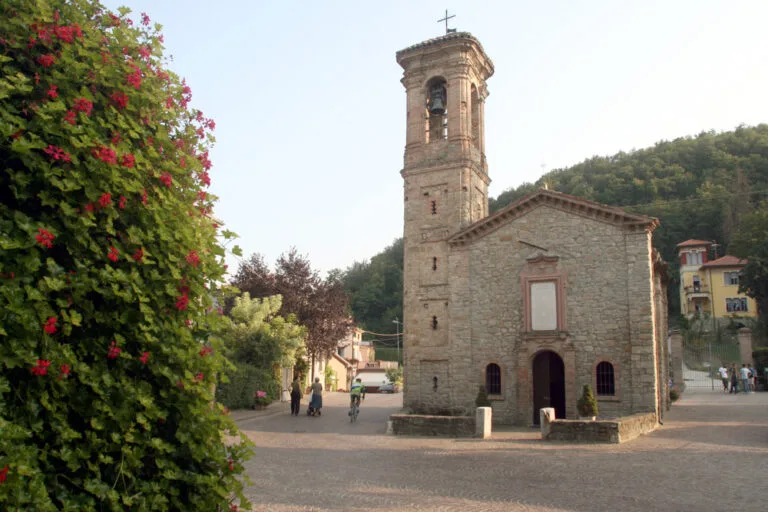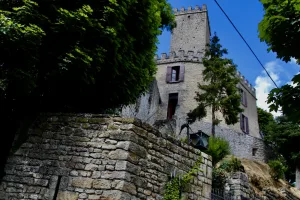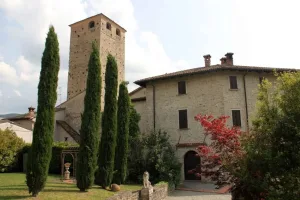A full-fledged member of the Olympus of the most beautiful villages in Italy,Fortunago is the place to plunge into the past and live an authentic experience of the Oltrepò Pavese, its beauty and its traditions. A village suspended in time.
Spring is certainly the ideal and most suggestive season to visit Fortunago. It is the time when the balconies of the houses are full of flowers, the flowerbeds are full of lavender, the woods are full of colour with primroses, lilies of the valley and narcissus. A blossoming that colours the village and the surrounding greenery in a new atmosphere.
Situated on a hill overlooking the valley, Fortunago is the ideal place to get away from the hustle and bustle of the city and relax in an atmosphere that tastes of poetry.
The magic of the alleys
The picturesque old town, the cobbled streets, the old stone houses are a picture postcard. Immerse yourself in the Middle Ages with breathtaking views. And a hidden piece of Italy that deserves to be discovered. Because everything here is orderly, beautiful and traffic-free. A small village to explore on foot for an authentic atmosphere.
There is the Church of San Giorgio, on the top of the hill, and the Oratory of Sant'Antonio Abate (1600), the guardian. There is also a large park with poplars, birch, chestnut and cherry trees, where deer and roe deer live. A veritable green museum with all the species of trunk trees native to the Apennines.
The Malaspina family and its castle
Fortunago had a castle owned by the Malaspina family that was gradually abandoned over the centuries. It stood on the high ground of the village and had a strategic position for the control of the surrounding area. However, today only a few traces remain of what was once an imposing defensive building. Today, it is still possible to see remains of walls and towers that bear witness to the castle's presence.
The colours of Provence
Wide expanses of lilac colour Fortunago, giving it a breathtaking visual spectacle. The lavender fields of this small overseas town are so unique and distinctive that they attract many people to photograph them in order to capture the essence of such a special place. Before venturing into a field in bloom, contact the local companies to arrange a guided tour. The best time to visit is from mid-June to the first week of July.
The views
One of the most fascinating features of Fortunago are the breathtaking views from its highest points. Having a camera handy is more of a duty than a suggestion.
The obelisk of Costa Pelata
The Battle of Costa Pelata marked the end of the last great anti-partisan uprising and the beginning of the liberation of Oltrepò. It was fought between 11 and 12 March 1945 and ended with the defeat and flight of the Republican National Guard, the Black Brigades, the White Flames and the Sichereits units, which, flanked by some German units, had tried to defeat the partisans in the area. Since 1950, a stone monument has been erected on the main street of the village to commemorate the event.

A film set
In March 2013, Fortunago was the setting for Paolo Virzì's film 'Il capitale umano' (The Human Capital), which was shot inside Villa La Dominante, in Montebelletto and in the ancient village. Among the actors were Fabrizio Bentivoglio, Valeria Golino and Valeria Bruna Tedeschi.
A raviolo for the Guinness Book of Records
Fortunago's name also made international headlines in 2015 when it registered the world record for making the largest agnolotto in the world. Chef Danilo Nembrini's 148 kg of raviolo (uncooked) literally smashed the previous record of Russian Alexei Semenov's 20 kg agnolotto. The feat took place in Piazza della Posta in front of more than a thousand people.













